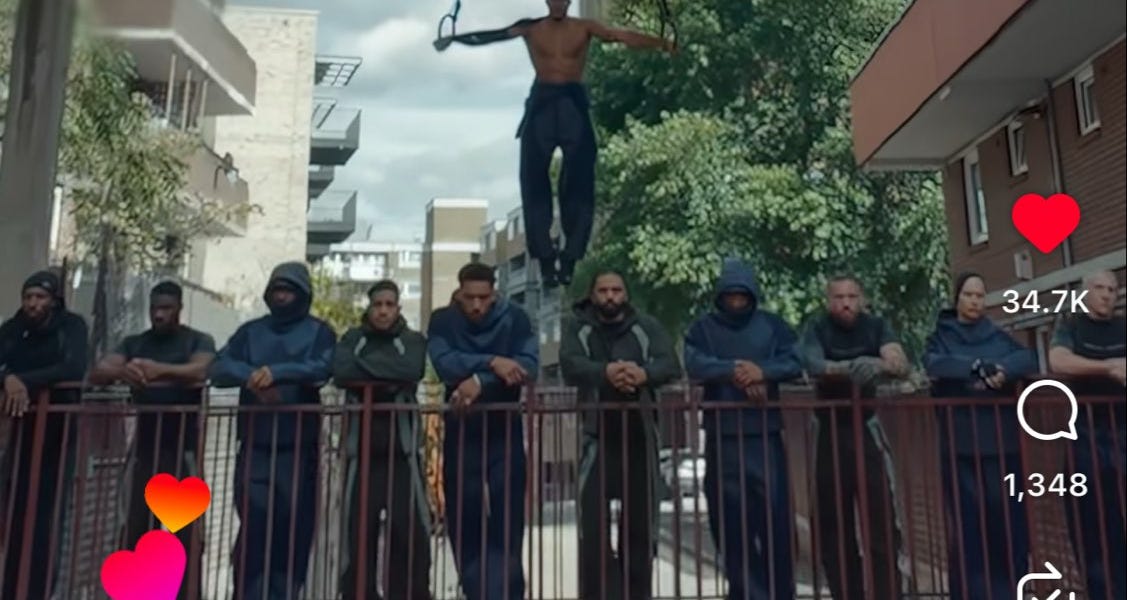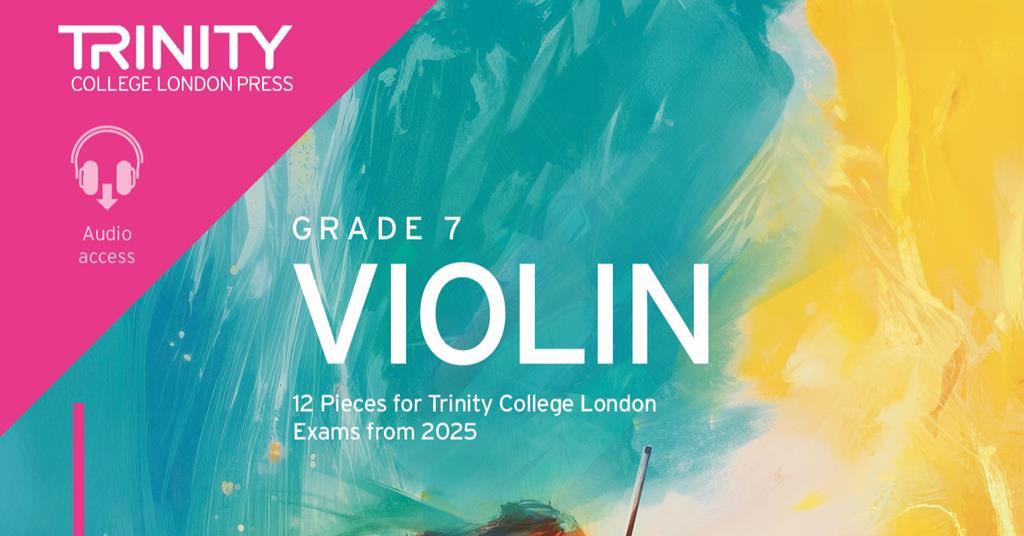A phase 2 trial is being conducted after findings showed safety of the gene therapy product and stabilization or improvement in severity of patients’ condition at 12 months post-treatment.
Phase 1 data for a new gene therapy heart failure…
A phase 2 trial is being conducted after findings showed safety of the gene therapy product and stabilization or improvement in severity of patients’ condition at 12 months post-treatment.
Phase 1 data for a new gene therapy heart failure…

Hi everyone, and welcome back to SportsVerse, my twice-weekly newsletter that tells stories you can’t find anywhere else about the intersection of sports, fashion, business, and culture.
It’s good to be back! Thanks for bearing with me last…
This request seems a bit unusual, so we need to confirm that you’re human. Please press and hold the button until it turns completely green. Thank you for your cooperation!

An AI platform that understands human emotion, a fintech business that makes cross-border payments easier, and a campaign aimed at raising awareness around dementia were all amongst the winners at the 7th annual Jersey…
This request seems a bit unusual, so we need to confirm that you’re human. Please press and hold the button until it turns completely green. Thank you for your cooperation!

The team behind Uno Platform released version 6.3 of the cross‑platform .NET UI framework, aimed at developers targeting mobile, desktop and WebAssembly using C# and XAML. The update includes early support for .NET 10 (RC1),…

Gully warsher. Duck drownder. Toad strangler. Cob floater. Sod soaker.
Whatever their names, summer in the Midwest isn’t summer without strong, sudden storms with towering clouds. While the Indian subcontinent is famous for its…

Globally, hepatocellular carcinoma (HCC) remains a leading cause of cancer-related mortality, with increasing incidence projected over the next two decades. In China, it is the second most lethal cancer, and the long-term prognosis following curative surgery remains poor due to high recurrence rates, with 5-year recurrence rates reported at approximately 50%–70%.1–6 Recurrence is most frequent within the first postoperative year and often appears as distant intrahepatic or extrahepatic metastases, thought to originate from undetected micrometastases present at surgery. Tumor-related features such as size, number, differentiation, microvascular invasion (MVI), and elevated alpha-fetoprotein (AFP) are major determinants of early recurrence. Conversely, factors including patient age, sex, underlying liver disease etiology, and cirrhosis are more commonly linked to late recurrence.7–9 While transcatheter arterial chemoembolization (TACE) is commonly used in this setting, the introduction of immune checkpoint inhibitors (ICIs) offers a novel therapeutic option. Building on recent trials investigating ICIs in advanced or unresectable HCC, such as IMbrave150 and CheckMate 459, attention has shifted to their potential in earlier disease stages. However, limited data exist regarding their application following surgery, especially in patients with MVI. Moreover, the duration of ICI therapy necessary to maximize efficacy remains undefined. This study sought to compare ICI-based therapy with TACE in a real-world postoperative setting and to assess whether extended ICI treatment (≥12 months) offers added benefit in reducing recurrence.
To evaluate the comparative efficacy of adjuvant ICI therapy versus TACE in improving RFS among HCC patients with MVI, we conducted a retrospective, multicenter cohort study enrolling patients who underwent curative-intent hepatic resection between January 1, 2017, and March 31, 2024, at Peking Union Medical College Hospital (Beijing), China-Japan Friendship Hospital (Beijing), and Sun Yat-sen University Cancer Center (Guangzhou). Inclusion criteria were: (1) complete (R0) resection; (2) age between 18 and 75 years; (3) pathologically confirmed HCC with MVI; and (4) Eastern Cooperative Oncology Group performance status (ECOG PS) score ≤ 1. Exclusion criteria encompassed: (1) recurrent HCC following prior curative resection; (2) history of spontaneous tumor rupture with hemorrhage; (3) coexistence of other active malignancies, including those in sustained remission; (4) administration of any neoadjuvant treatment modalities for HCC, including TACE, molecular targeted therapy, immunotherapy, or radiotherapy; and (5) death from non-HCC-related causes prior to follow-up.
For patients anticipated to undergo extensive hepatectomy, preoperative evaluation of hepatic functional reserve was performed using the indocyanine green (ICG) retention test at 15 minutes. Surgical procedures were standardized across centers in accordance with established protocols previously described in the literature.10
Postoperative follow-up was routinely conducted 4 to 8 weeks after hepatic resection. For patients with MVI, adjuvant therapy was recommended contingent upon satisfactory general health and absence of contraindications. Given the lack of universally accepted adjuvant standards for MVI-positive HCC, treatment decisions were made based on multidisciplinary clinical evaluation, institutional practice patterns, and physician consensus. Regimen selection followed consistent clinical principles across centers and reflected contemporary real-world management of high-risk HCC. All adjuvant therapies, when applied, were initiated within 4 to 8 weeks following surgery.
Adjuvant TACE was initiated within 4–6 weeks post-resection, involving femoral artery catheterization and infusion of chemotherapeutic agents, as per institutional protocols.
Frequently employed targeted agents included lenvatinib,11 apatinib,12 donafenib, regorafenib,13 bevacizumab,14 administered once daily with dosage adjusted according to body weight or manufacturer guidelines. Immunotherapeutic agents commonly utilized in the adjuvant setting included sintilimab,15 carrelizumab,16 atezolizumab,14 tislelizumab.17 Prior to initiation, patients underwent thorough pre-treatment screening comprising blood panels, thyroid function assessment, electrocardiography, and chest CT imaging to ensure eligibility. ICIs were administered intravenously every three weeks in accordance with recommended dosing protocols. Vital signs were closely monitored during infusion and for at least 1hour post-infusion to promptly detect and manage any infusion-related reactions. Although the intended duration of adjuvant ICI therapy was 24 months, actual treatment durations varied in clinical practice. Some patients discontinued treatment within the first few months due to adverse events, financial burden, or poor adherence, even in the absence of tumor recurrence. To reduce immortal time bias in survival comparisons, patients who received ICI therapy for less than 6 months or experienced disease recurrence within 6 months were excluded from the duration-based survival analysis.
Postoperative surveillance was rigorously implemented. All patients were scheduled for monthly follow-up visits during the first three months after hepatic resection, followed by assessments every three months for the subsequent two years, and semiannually thereafter. Each follow-up visits included evaluation of serum tumor markers, abdominal ultrasonography, and contrast-enhanced abdominal CT or MRI. Additional investigations, such as chest CT, bone scan, or positron emission tomography–CT (PET-CT), were performed when distant metastasis was clinically suspected. Follow-up was continued until patient death or loss to follow-up. The endpoint of the follow-up was September 20, 2024. Treatment of recurrence was personalized according to tumor profile, organ function, and patient status. The primary endpoint was RFS, as it reflects the direct effect of adjuvant therapy on preventing early relapse, particularly relevant in MVI-positive patients. OS was designated as a secondary endpoint, acknowledging the variability introduced by post-recurrence treatment heterogeneity. Of the 319 patients who received postoperative adjuvant therapy, 30 (9.4%) were lost to follow-up. Among the 80 patients under routine surveillance who did not receive adjuvant treatment, 9 (11.2%) were lost to follow-up. These individuals were not excluded from the analysis; instead, the time of their last documented follow-up was incorporated as censored observations in the survival analysis. This censoring strategy, implemented via the Kaplan–Meier method, ensured the inclusion of all available patient data and upheld the statistical robustness and validity of survival estimations.
Continuous variables were summarized as mean ± standard deviation or median with interquartile range (IQR), and compared using Student’s t test or Mann–Whitney U-test, as appropriate. Categorical variables were compared using Pearson’s chi-square or Fisher’s exact test. To adjust for baseline differences between the TACE and immunotherapy groups, 1:1 PSM was performed using a nearest-neighbor algorithm (caliper = 0.2, no replacement). Covariates included AFP grade, HBV DNA, tumor differentiation, surgical margin, tumor number and size, satellite nodules, tumor embolus, MVI, and liver cirrhosis, selected based on clinical relevance and potential influence on treatment assignment. RFS and OS were estimated by Kaplan–Meier analysis and compared using Log rank tests; Cox regression identified independent predictors. Variables with P < 0.05 in univariate analysis, as well as clinically relevant covariates, were entered into the multivariate Cox regression model. To reduce immortal time bias, a 6-month landmark analysis excluded patients with recurrence or death before this point. Analyses were conducted using R (v4.3.1), with p < 0.05 considered significant.
From January 2017 to March 2024, a total of 1526 HCC patients from the three aforementioned centers were initially enrolled. All patients underwent curative liver resection, and postoperative pathology confirmed the diagnosis of HCC. Among them, 1,048 patients without MVI, 46 patients who received neoadjuvant therapy, 23 patients diagnosed with concurrent malignancies, and 10 patients who died from non-HCC-related causes were excluded. Ultimately, 399 patients were included in the final analysis (Figure 1). Among these patients, 132 received TACE alone, 58 received TACE combined with targeted therapy, 68 received TACE combined with targeted immunotherapy, 21 received targeted therapy combined with immunotherapy, 40 received only immunotherapy, and the remaining 80 patients did not receive any form of postoperative adjuvant therapy. Among the 319 patients who received postoperative adjuvant therapy, 30 were lost to follow-up, and among the 80 patients under active monitoring, 9 were lost to follow-up.
|
Figure 1 Patients flow chart. Abbreviations: MVI, microvascular invasion; HCC, hepatocellular carcinoma; TACE, transcatheter arterial chemoembolization; ICI, immune checkpoint inhibitor.
|
A total of 129 patients received adjuvant immunotherapy following curative hepatic resection. Among them, 40 received tislelizumab (anti–PD-1), 24 received camrelizumab (anti–PD-1), 21 received sintilimab (anti–PD-1), 11 received atezolizumab (anti–PD-L1), 10 received cadonilimab (a bispecific PD-1/CTLA-4 antibody), 10 received toripalimab (anti–PD-1), 7 received envafolimab (anti–PD-L1), and 6 received pembrolizumab (anti–PD-1). To minimize immortal time bias in the treatment duration analysis, 45 patients were excluded due to tumor recurrence occurring between 2 and 6 months postoperatively or receipt of immunotherapy for fewer than 6 months. The remaining 84 patients were included in the final analysis: 46 received adjuvant immunotherapy for less than 12 months, and 38 received it for 12 months or longer (Figure 1).
Before matching, the TACE and immunotherapy groups were largely comparable in baseline demographics and disease characteristics, except for differences in age, HBV DNA, and AFP levels. After 1:1 propensity score matching, 108 patients were included in each group (Figure 1), with no significant differences observed in baseline characteristics. A summary of baseline characteristics before and after matching is presented in Table 1.
 |
Table 1 Baseline Characteristics of HCC Patients in the TACE and Immunotherapy Groups Before and After PSM
|
During a median follow-up of 18 months (IQR 10–29 months), recurrence or metastasis occurred in 44 patients (34.1%) in the immunotherapy cohort and 86 patients (65.2%) in the TACE cohort. The predominant recurrence sites were the liver, lungs, and bones.
The median RFS was significantly longer in the immunotherapy cohort at 35 months (95% CI, 19–NA), compared with 16 months (95% CI, 10.8–27) in the TACE cohort (HR = 0.50, 95% CI, 0.34–0.72; p = 0.00015; Figure 2a). RFS rates at 12, 24, and 36 months were 75.4%, 53.1%, and 49.6% in the immunotherapy group, versus 54.5%, 42.8%, and 25.9% in the TACE group. Mortality was lower in the immunotherapy cohort (5.4%, 7 patients) compared to the TACE cohort (17.4%, 23 patients). Median overall survival (OS) was not reached in either group, but OS was significantly improved with immunotherapy (HR = 0.34, 95% CI, 0.14–0.80; p = 0.0096; Figure 2b). OS rates at 12, 24, and 36 months were 100.0%, 93.6%, and 86.9% in the immunotherapy cohort, versus 88.6%, 82.8%, and 81.0% in the TACE cohort. After PSM, the RFS benefit associated with immunotherapy remained statistically significant (HR = 0.54, 95% CI, 0.36–0.82; p = 0.0042; Figure 2c), while the OS difference was no longer statistically significant (HR = 0.43, 95% CI, 0.18–1.40; p = 0.060; Figure 2d).
 |
Figure 2 Kaplan-Meier survival curves comparing the adjuvant ICI cohort and the TACE cohort: (a) RFS and (b) OS before PSM; (c) RFS and (d) OS after PSM. Abbreviations: HR, hazard ratio; CI, confidence interval.
|
Univariate and multivariate Cox regression analyses identified several independent predictors of poor prognosis (Table 2). For RFS, an advanced CNLC stage was significantly associated with shorter survival. For OS, a resection margin of less than 0.5 cm was identified as independent adverse prognostic factors.
 |
Table 2 Univariate and Multivariate Analysis for RFS and OS of HCC Patients
|
Among the 129 patients who received immunotherapy, 55 patients (42.6%) experienced at least one treatment-related AE. Grade 1–2 AEs occurred in 51 patients (39.5%), while 13 patients (10.1%) experienced grade 3–4 events. No grade 5 AEs were reported (Supplementary Table 1). The most frequent AEs (any grade) were rash (9.3%), elevated AST (8.5%), ALT (7.8%), thrombocytopenia (7.0%), hypoalbuminemia (6.2%), and hypothyroidism (6.2%). Most events were grade 1–2 in severity. The most common grade 3–4 AEs included rash (5.4%), hypothyroidism (4.7%), and hypertension (3.9%). Other observed toxicities such as increased bilirubin (3.9%), elevated creatinine (3.9%), leukopenia (3.1%), mouth ulcers (3.1%), and fatigue (1.6%) were generally mild and manageable. No treatment-related deaths were observed.
To minimize immortal time bias, we excluded patients with recurrence-free survival less than 6 months and those who received ICI therapy for fewer than 6 months. Among the remaining cohort, patients who received adjuvant ICI therapy for 12 months or longer demonstrated significantly better RFS compared to those treated for less than 12 months (HR: 0.46, 95% CI: 0.21–0.99, p = 0.041; Figure 3a). A similar trend toward improved overall survival was observed, although the difference did not reach statistical significance (HR: 0.19, 95% CI: 0.02–1.59, p = 0.086; Figure 3b).
 |
Figure 3 Survival outcomes of patients receiving adjuvant ICI therapy for ≥12 months versus <12 months: (a) RFS and (b) OS. Abbreviations: HR, hazard ratio; CI, confidence interval.
|
Among the 129 patients who received ICI-based adjuvant therapy, 68 received TACE combined with targeted immunotherapy, 21 received targeted immunotherapy, and 40 received immunotherapy alone. To account for the potential influence of different treatment regimens on survival outcomes, we conducted a subgroup analysis focusing on the largest group—patients who received postoperative TACE combined with targeted immunotherapy. After excluding those with a DFS less than 6 months and those who received immunotherapy for less than 6 months, we reevaluated RFS and OS. The analysis showed that patients who received ICIs for 12 months or longer had significantly improved RFS compared to those treated for less than 12 months (HR: 0.29, 95% CI: 0.11–0.79, p = 0.011; Figure 4a). While a longer OS was also observed in patients treated for 12 months or more, this difference was not statistically significant (HR: 0.19, 95% CI: 0.02–1.61, p = 0.089; Figure 4b).
 |
Figure 4 Survival outcomes in the subgroup receiving TACE combined with targeted immunotherapy, stratified by ICI treatment duration (≥12 months vs <12 months): (a) RFS and (b) OS. Abbreviations: HR, hazard ratio; CI, confidence interval.
|
Among patients who received adjuvant immunotherapy, no significant differences were observed in the total number of adverse events between those treated for ≥12 months and those treated for <12 months (84.8% vs 89.5%, p >0.999; Supplementary Table 2). Similarly, the occurrence of grade 3–4 adverse events did not differ significantly between the two groups (26.1% vs 15.9%, p = 0.149; Supplementary Table 2). When comparing specific adverse events, no individual AE type showed a statistically significant difference between the two groups. However, numerically higher rates of hypertension and thrombocytopenia were noted in the ≥12-month treatment group, suggesting a trend toward increased incidence of some events with prolonged immunotherapy. Overall, extended treatment duration was not associated with a significantly increased risk of severe toxicity.
Adjuvant therapies such as TACE, targeted agents, and immunotherapy have been associated with improved RFS and OS in HCC patients after curative resection.18–20 However, the optimal duration of adjuvant immunotherapy for HCC patients with high-risk recurrence factors remains undefined, and real-world evidence on this topic is lacking. Although certain guidelines recommend that adjuvant immunotherapy should not exceed one year, they do not specify a minimum or preferred treatment duration.21,22 In our study, compared to TACE alone, immunotherapy—either as monotherapy or in combination with TACE or targeted agents—was associated with a significant reduction in recurrence and improvement in OS among HCC patients with MVI who underwent R0 resection. After PSM, the benefit in RFS remained statistically significant, while the difference in overall survival was attenuated and no longer reached statistical significance. Importantly, ICI-based adjuvant therapies did not lead to a significant increase in AEs, with most AEs being grade 1–2, indicating good safety and tolerability. Among patients receiving adjuvant ICIs, a treatment duration of 12 months or longer was associated with significantly improved RFS compared to shorter durations. While a numerically favorable trend in OS was noted in the longer-duration group, the difference was not statistically significant. Therefore, no definitive conclusion regarding OS benefit can be drawn based on the current data, and this observation should be interpreted with caution. Furthermore, the total number of AEs and the incidence of grade 3–4 AEs were not significantly increased with longer treatment durations. Nevertheless, given the limited sample size of our study, larger and more comprehensive trials are needed to validate the safety and efficacy of postoperative adjuvant ICI therapy in this setting.
The clinical efficacy of ICIs was initially established in the advanced or unresectable HCC setting, as demonstrated by trials such as CheckMate 45923 and IMbrave150.7 These studies showed that ICIs enhance antitumor immunity and may eradicate disseminated tumor cells. Extending this principle to earlier disease stages, adjuvant therapy aims to eliminate residual micrometastases and reduce distant recurrence, a major cause of treatment failure in MVI-positive patients. Indeed, several recent trials have tested this hypothesis. IMbrave050 reported an early RFS benefit with atezolizumab plus bevacizumab, though its updated analysis raised concerns about durability.24 In contrast, a Phase II randomized controlled trial investigating adjuvant sintilimab showed a significant improvement in RFS among HCC patients with MVI,19 aligning with our findings and underscoring that high-risk populations may derive the greatest benefit. Retrospective studies have also suggested that adjuvant ICIs may improve prognosis among patients at high risk of recurrence.25,26
Although several studies have investigated the safety and efficacy of adjuvant immunotherapy for HCC, the optimal duration of treatment has not been thoroughly explored. Given that treatment duration may critically influence patient outcomes, there is an urgent need for dedicated clinical trials addressing this issue. However, research specifically focused on treatment duration remains scarce. A prospective, multicenter cohort study evaluated the impact of adjuvant ICI treatment duration on RFS and OS in HCC patients at high risk of recurrence.27 The results suggested that patients receiving adjuvant ICI therapy for more than six months tended to achieve better RFS and OS compared to those treated for six months or less, although the differences did not reach statistical significance. Despite the absence of a positive finding, the study indicated that six months of adjuvant ICI therapy might be insufficient and that extended treatment duration could potentially yield greater clinical benefits. Importantly, the design of ongoing Phase III randomized trials also reflects this rationale. Major studies such as CheckMate-9DX, KEYNOTE-937, JUPITER-04, SHR-1210-III-325, EMERALD-2, and DaDaLi have all adopted a 12-month adjuvant ICI regimen as the standard duration,27 underscoring the clinical plausibility of our chosen cutoff. Nevertheless, the optimal duration of adjuvant immunotherapy remains an unresolved issue, not only in HCC but also in other malignancies such as non-small cell lung cancer28,29 and melanoma, where prolonged ICI therapy has shown improved outcomes in certain settings. Our findings suggest that extending ICI therapy beyond 12 months may confer additional benefits for high-risk HCC patients; however, this hypothesis requires validation in prospective randomized studies. Future research should focus on defining the optimal duration of adjuvant immunotherapy, identifying predictive biomarkers for treatment benefit, and developing combination strategies tailored to individual recurrence risk profiles.
As a retrospective study, our analysis is inevitably subject to inherent biases. We acknowledge that comparisons based on treatment duration are vulnerable to immortal time bias, as longer-lived patients may be more likely to receive prolonged therapy. To mitigate this issue, we excluded patients who experienced recurrence or death within 6 months after surgery and those who received ICI therapy for less than 6 months. By restricting the analysis to patients who survived at least 6 months and initiated ICI treatment early, the impact of immortal time bias was reduced, although residual confounding remains possible. We also recognize that analyses involving secondary endpoints and subgroup comparisons may increase the risk of type I error. Another limitation is that the majority of ICIs used in our cohort were PD-1 inhibitors, with only a minority of patients treated with a bispecific PD-1/CTLA-4 antibody. Consequently, the efficacy and safety of other classes of immunotherapeutic agents, such as PD-L1 inhibitors, CTLA-4 inhibitors, and dual-targeting antibodies, were not assessed and warrant further investigation. Moreover, the heterogeneity of treatment regimens within our cohort may have influenced the outcomes. In addition, most patients in our study had HBV-related HCC, reflecting the epidemiological profile of HBV-endemic regions. Therefore, the generalizability of our findings to populations with HCV-related, alcohol-related, or non-viral HCC remains uncertain. Taken together, these limitations indicate that our conclusions should be interpreted with caution. Nonetheless, our findings provide important insights into the potential inadequacy of immunotherapy durations shorter than one year in high-risk HCC patients and highlight the need for prospective, standardized studies across diverse patient populations to confirm these observations.
This retrospective cohort study suggests that adjuvant ICI therapy following curative resection may improve RFS in HCC patients at high risk of recurrence compared to TACE. Notably, our findings indicate that a treatment duration of 12 months or longer is associated with improved RFS in patients with MVI. However, no statistically significant improvement in OS was observed with longer treatment duration. These results highlight the need to reconsider adjuvant immunotherapy strategies in this population, and underscore the importance of prospective, randomized, and large-scale clinical trials to determine the optimal duration of adjuvant ICI therapy for HCC.
HCC, Hepatocellular carcinoma; MVI, Microvascular invasion; ICI, Immune checkpoint inhibitor; TACE, Transcatheter arterial chemoembolization; RFS, Recurrence-free survival; OS, Overall survival; PSM, Propensity score matching; AFP, Alpha-fetoprotein; HAIC, Hepatic arterial infusion chemotherapy; ECOG PS, Eastern Cooperative Oncology Group performance status; CT, Computed tomography; MRI, Magnetic resonance imaging; ICG, Indocyanine green; AST, Aspartate aminotransferase; ALT, Alanine aminotransferase; CNLC, China Liver Cancer staging system; BCLC, Barcelona Clinic Liver Cancer staging; PET-CT, Positron emission tomography-computed tomography; HR, Hazard ratio; CI, Confidence interval; AE, Adverse event; PD-1, Programmed death-1; PD-L1, Programmed death-ligand 1; CTLA-4, Cytotoxic T-lymphocyte-associated protein 4.
All data supporting the results of the study can be found in the article. Further inquiries can be directed to the corresponding author.
This study was conducted in accordance with the Declaration of Helsinki and was approved by the Ethics Committee of Peking Union Medical College Hospital (Approval No. I-23PJ964). Informed consent was obtained from all individual participants included in the study.
Xiaokun Chen, Jiali Xing, and Baoluhe Zhang are co-first authors for this study. We thank all the patients and the medical staff.
All authors made a significant contribution to the work reported, whether that is in the conception, study design, execution, acquisition of data, analysis and interpretation, or in all these areas; took part in drafting, revising or critically reviewing the article; gave final approval of the version to be published; have agreed on the journal to which the article has been submitted; and agree to be accountable for all aspects of the work.
This work was supported by the National Natural Science Foundation of China (81972698); the CAMS Innovation Fund for Medical Sciences (CIFMS 2021-I2M-01-014); Changzhou Xi Tai Hu development foundation for frontier cell- therapeutic technology (2024-P-019); the 2024 PhD Short-term Academic Visiting Program of Peking Union Medical College; the Start-up Fund from the Department of Liver Surgery, Peking Union Medical College Hospital; the Central high-level hospital clinical research special key cultivation project (2022-PUMCH-C-047); and 2021 Liver Cancer Diagnosis and Treatment Exchange Fund of Hubei Chen Xiaoping Science and Technology Development Foundation (CXPJJH1200009-01).
The authors have no conflicts of interest to declare in this work.
1. Han B, Zheng R, Zeng H, et al. Cancer incidence and mortality in China, 2022. J Natl Cancer Cent. 2024;4(1):47–53. doi:10.1016/j.jncc.2024.01.006
2. Rumgay H, Arnold M, Ferlay J, et al. Global burden of primary liver cancer in 2020 and predictions to 2040. J Hepatol. 2022;77(6):1598–1606. doi:10.1016/j.jhep.2022.08.021
3. Zhou L, Wang S-B, Chen S-G, et al. Risk factors of recurrence and poor survival in curatively resected hepatocellular carcinoma with microvascular invasion. Adv Clin Exp Med. 2020;29(7):887–892. doi:10.17219/acem/76750
4. Lee S, Kang TW, Song KD, et al. Effect of microvascular invasion risk on early recurrence of hepatocellular carcinoma after surgery and radiofrequency ablation. Ann Surg. 2021;273(3):564–571. doi:10.1097/SLA.0000000000003268
5. Straś WA, Wasiak D, Łągiewska B, et al. Recurrence of hepatocellular carcinoma after liver transplantation: risk factors and predictive models. Ann Transplant. 2022;27:e934924. doi:10.12659/AOT.934924
6. Hirokawa F, Hayashi M, Asakuma M, et al. Risk factors and patterns of early recurrence after curative hepatectomy for hepatocellular carcinoma. Surg Oncol. 2016;25(1):24–29. doi:10.1016/j.suronc.2015.12.002
7. Qin S, Chen M, Cheng A-L, et al. Atezolizumab plus bevacizumab versus active surveillance in patients with resected or ablated high-risk hepatocellular carcinoma (IMbrave050): a randomised, open-label, multicentre, Phase 3 trial. Lancet. 2023;402(10415):1835–1847. doi:10.1016/S0140-6736(23)01796-8
8. Pan H, Zhou L, Cheng Z, et al. Perioperative Tislelizumab plus intensity modulated radiotherapy in resectable hepatocellular carcinoma with macrovascular invasion: a phase II trial. Nat Commun. 2024;15(1):9350. doi:10.1038/s41467-024-53704-5
9. Peng N, Mao L-F, Su J-Y, et al. The efficacy and safety of tislelizumab with or without tyrosine kinase inhibitor as adjuvant therapy in hepatocellular carcinoma with high-risk of recurrence after curative resection. Front Immunol. 2025;16:1593153. doi:10.3389/fimmu.2025.1593153
10. Shi M, Guo R-P, Lin X-J, et al. Partial hepatectomy with wide versus narrow resection margin for solitary hepatocellular carcinoma: a prospective randomized trial. Ann Surg. 2007;245(1):36–43. doi:10.1097/01.sla.0000231758.07868.71
11. Kudo M, Finn RS, Qin S, et al. Lenvatinib versus sorafenib in first-line treatment of patients with unresectable hepatocellular carcinoma: a randomised phase 3 non-inferiority trial. Lancet. 2018;391(10126):1163–1173. doi:10.1016/S0140-6736(18)30207-1
12. Qin S, Li Q, Gu S, et al. Apatinib as second-line or later therapy in patients with advanced hepatocellular carcinoma (AHELP): a multicentre, double-blind, randomised, placebo-controlled, phase 3 trial. Lancet Gastroenterol Hepatol. 2021;6(7):559–568. doi:10.1016/S2468-1253(21)00109-6
13. Bruix J, Qin S, Merle P, et al. Regorafenib for patients with hepatocellular carcinoma who progressed on sorafenib treatment (RESORCE): a randomised, double-blind, placebo-controlled, phase 3 trial. Lancet. 2017;389(10064):56–66. doi:10.1016/S0140-6736(16)32453-9
14. Zhu AX, Abbas AR, de Galarreta MR, et al. Molecular correlates of clinical response and resistance to atezolizumab in combination with bevacizumab in advanced hepatocellular carcinoma. Nat Med. 2022;28(8):1599–1611. doi:10.1038/s41591-022-01868-2
15. Ren Z, Xu J, Bai Y, et al. Sintilimab plus a bevacizumab biosimilar (IBI305) versus sorafenib in unresectable hepatocellular carcinoma (ORIENT-32): a randomised, open-label, Phase 2–3 study. Lancet Oncol. 2021;22(7):977–990. doi:10.1016/S1470-2045(21)00252-7
16. Qin S, Chan SL, Gu S, et al. Camrelizumab plus rivoceranib versus sorafenib as first-line therapy for unresectable hepatocellular carcinoma (CARES-310): a randomised, open-label, international phase 3 study. Lancet. 2023;402(10408):1133–1146. doi:10.1016/S0140-6736(23)00961-3
17. Qin S, Kudo M, Meyer T, et al. Tislelizumab vs sorafenib as first-line treatment for unresectable hepatocellular carcinoma: a phase 3 randomized clinical trial. JAMA Oncol. 2023;9(12):1651–1659. doi:10.1001/jamaoncol.2023.4003
18. Wen Y, Lu L, Mei J, et al. Hepatic arterial infusion chemotherapy vs transcatheter arterial chemoembolization as adjuvant therapy following surgery for MVI-positive hepatocellular carcinoma: a multicenter propensity score matching analysis. J Hepatocell Carcinoma. 2024;11:665–678. doi:10.2147/JHC.S453250
19. Wang K, Xiang Y-J, Yu H-M, et al. Adjuvant sintilimab in resected high-risk hepatocellular carcinoma: a randomized, controlled, phase 2 trial. Nat Med. 2024;30(3):708–715. doi:10.1038/s41591-023-02786-7
20. Chen X, Wu X, Peng W, et al. Combined TACE with targeted and immunotherapy versus TACE alone improves DFS in HCC with MVI: a multicenter propensity score matching study. J Hepatocell Carcinoma. 2025;12:561–577. doi:10.2147/JHC.S504016
21. Benson AB, D’Angelica MI, Abrams T, et al. NCCN clinical practice guidelines in Oncology. (NCCN Guidelines®). Hepatobiliary cancers. 2024 (Version 2.2024).
22. Singal AG, Llovet JM, Yarchoan M, et al. AASLD practice guidance on prevention, diagnosis, and treatment of hepatocellular carcinoma. Hepatology. 2023;78(6):1922–1965. doi:10.1097/HEP.0000000000000466
23. Yau T, Park J-W, Finn RS, et al. Nivolumab versus sorafenib in advanced hepatocellular carcinoma (CheckMate 459): a randomised, multicentre, open-label, phase 3 trial. Lancet Oncol. 2022;23(1):77–90. doi:10.1016/S1470-2045(21)00604-5
24. Yopp A, Kudo M, Chen M, et al. LBA39 Updated efficacy and safety data from IMbrave050: phase III study of adjuvant atezolizumab (atezo) + bevacizumab (bev) vs active surveillance in patients (pts) with resected or ablated high-risk hepatocellular carcinoma (HCC). Ann Oncol. 2024;35.
25. Chen W, Hu S, Liu Z, et al. Adjuvant anti-PD-1 antibody for hepatocellular carcinoma with high recurrence risks after hepatectomy. Hepatol Int. 2023;17(2):406–416. doi:10.1007/s12072-022-10478-6
26. Yang J, Jiang S, Chen Y, et al. Adjuvant ICIs plus targeted therapies reduce HCC recurrence after hepatectomy in patients with high risk of recurrence. Curr Oncol. 2023;30(2):1708–1719. doi:10.3390/curroncol30020132
27. Su J-Y, Liu SP, Xu XL, et al. Treatment duration of adjuvant immune checkpoint inhibitors in hepatocellular carcinoma patients at high risk of recurrence after resection: a prospective, multicentric cohort study. Liver Cancer. 2024;1–18.
28. Waterhouse DM, Garon EB, Chandler J, et al. Continuous versus 1-year fixed-duration nivolumab in previously treated advanced non-small-cell lung cancer: checkMate 153. J Clin Oncol. 2020;38(33):3863–3873. doi:10.1200/JCO.20.00131
29. Zalcman G, Balmaña J, Bober SL, et al. 972O Nivolumab (Nivo) plus ipilimumab (Ipi) 6-months treatment versus continuation in patients with advanced non-small cell lung cancer (aNSCLC): results of the randomized IFCT-1701 phase III trial. Ann Oncol;2022:33. doi:10.1016/j.annonc.2022.10.004

Trinity’s refreshed Strings Syllabus from 2025 marks an exciting new chapter for violinists. Designed to nurture creativity, technical skill and musical identity, the new Violin Exam Pieces from 2025 books bring together an exceptional range…